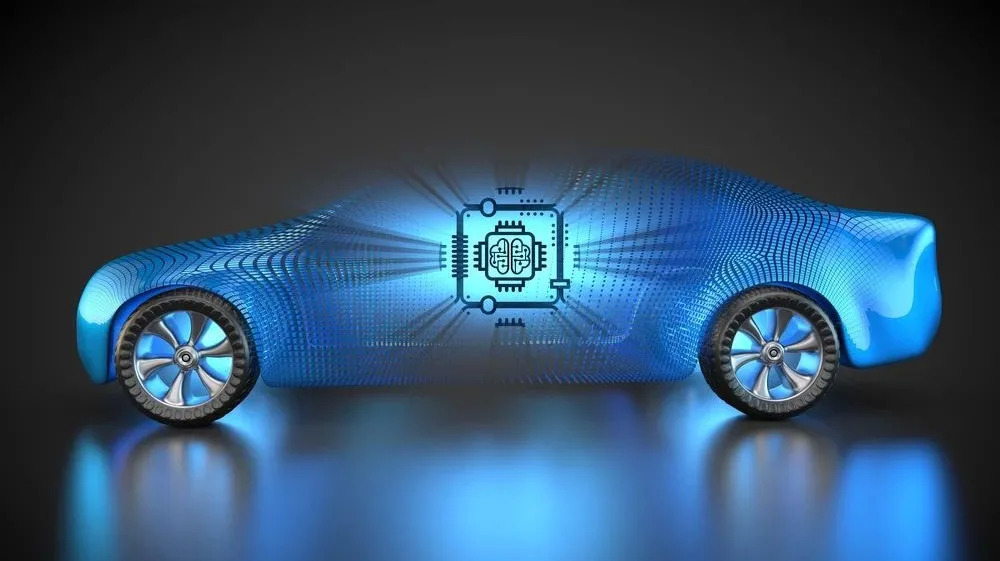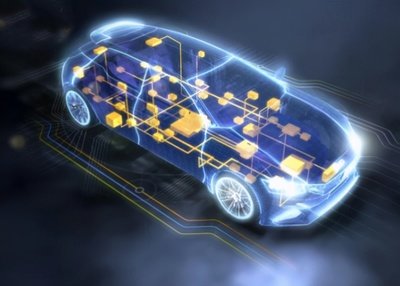For a long time, it is not new for OEMs to control pricing power and initiative in the automotive industry chain. However, with the advent of the era of new energy vehicles, this phenomenon has begun to undergo some subtle changes. Share 40% of the profit, the profit model of the auto industry chain manufacturers is quietly changing.
Recently, Nvidia announced that it has reached a cooperation with Mercedes-Benz. The two parties will jointly develop artificial intelligence and self-driving car applications, and the Drive Pilot automatic driving system based on Nvidia’s self-driving chip Orin will be given priority to Mercedes-Benz’s next-generation models. The cooperation between automobile OEMs and upstream electronic component manufacturers is actually not a new case. Basically, such things happen every day in the industry. The reason why the cooperation between Mercedes-Benz and Nvidia has attracted wide attention in the industry is because of its large-scale “sales sharing” cooperation model.
According to relevant media, Nvidia used its monopoly position in high-performance self-driving chip technology to cooperate with Mercedes-Benz to use the “vehicle sales sharing model”. For every Drive Pilot sold by Mercedes-Benz, Nvidia gets 40 percent of the revenue. As the “revenue sharing model” begins to enter the automotive supply chain system, it is changing the profit model of all participants in the automotive industry chain.
For OEMs represented by Mercedes-Benz, in the era of “software-defined cars”, selling software to users is considered to be a new field that can earn a lot of profits for auto companies in addition to vehicle sales and after-sales services. However, with the rise of hardware manufacturers such as Nvidia, it will undoubtedly be a serious blow to OEMs including Mercedes-Benz. Not only does it mean that the OEMs represented by Mercedes-Benz will lose their dominance and pricing power over “software suppliers”, but it also means that the profitability of software services, which OEMs regard as the next profit point, will be shaved by nearly half .
For chip manufacturers represented by Nvidia, the current overall revenue of the automotive business is relatively small, only about US$900 million, accounting for only about 3.35%. In-depth binding with major automotive terminal customers such as Mercedes-Benz will bring considerable incremental revenue to the company for a long time to come. According to the estimation of CAM, the German automobile management center, about half of the current S-class and EQS users will pay for Mercedes-Benz Drive Pilot. If Drive Pilot is conservatively calculated at 5,000 euros before tax and the global sales of 87,000 S-class vehicles in 2021, Nvidia can take 170 million euros in revenue from Mercedes-Benz Drive Pilot in a year. If you take into account that Mercedes-Benz will further expand Drive Pilot to G-Class, E-Class and other models in the future, the future revenue of Nvidia’s automotive business will be very considerable, which will accelerate the company’s realization of the small goal of “6-year revenue of 11 billion US dollars in the automotive business”. Judging from this cooperation, on the surface, Mercedes-Benz is obviously the party that suffers. As a top luxury car brand, why did Mercedes-Benz make such a move? What benefits can Mercedes-Benz gain?
Clearly, the answer is priority access and leading competitiveness. At present, although new forces including Tesla and Wei Xiaoli are very aggressive in the automatic driving function, Mercedes-Benz is the first car company in the world to introduce the L3 level automatic driving system to the market, becoming Traditional automakers are the first movers to put L3 autonomous driving on the sales channel.
According to Mercedes-Benz, after turning on Drive Pilot, Mercedes-Benz owners can free their hands at a high speed of 60 km/h, and can use it for office or entertainment. And in terms of price, German S-class and EQS car owners can remotely download Drive Pilot at a price of 5,000 euros and 7,430 euros (excluding tax), which is undoubtedly more competitive than FSD’s price of 7,500 euros. However, Drive Pilot’s L3 autonomous driving is still essentially achieved by stacking sensors and high-precision maps. In the next step, if Mercedes-Benz wants to realize L4 autonomous driving, it is still a long way off. With Mercedes-Benz and Nvidia reaching such a brand-new strategic agreement, Mercedes-Benz can obtain the Nvidia Atlan chip and the self-driving platform DRIVE Hyperion9 based on the chip prior to other vehicle companies. This will lay a solid foundation for Mercedes-Benz’s new generation of L4 autonomous driving system to be launched in 2025.
There are many players in autonomous driving chips, but there are still very few companies that actually ship in large quantities.
Automotive chips have huge potential. According to McKinsey’s forecast, the global automotive chip market will triple in size to $160 billion by 2030, with an average annual growth rate of 15%. Specific to the autopilot chip market, according to wind data, the global autopilot chip market will be about US$2.3 billion in 2021, of which the Chinese market will be about US$800 million. It is expected that the compound annual growth rate of the global and Chinese markets will exceed 30% from 2021 to 2025 . As the soul of autonomous driving, autonomous driving chips have high entry barriers and long verification cycles. Although many companies currently claim that they are making autonomous driving chips, there are still very few companies that can actually achieve large-scale mass shipments.
From a foreign point of view, besides Nvidia, the current major players in autonomous driving chips include Qualcomm, Tesla, mobileye and other companies.
(1) Nvidia
Among them, NVIDIA launched the DRIVE AGX Orin platform in 2019 by virtue of its monopoly position on the AI training end, and it will be mass-produced and sold in March 2022. According to public information, Orin SoC uses a 7-nanometer process, consisting of Ampere-based GPU, ARM Hercules CPU, second-generation deep learning accelerator DLA, second-generation vision accelerator PVA, video codec, and wide dynamic range ISP. The force can reach 254 TOPS (ie trillion operations per second). In addition, the chip can meet the needs of different customers for different levels of autonomous driving through different combinations.
At present, Nvidia Orin chips have been supplied by major automakers. The company said that the total revenue of automobile orders in the next six years will increase from US$8 billion to more than US$11 billion, covering the entire autonomous vehicle industry, which can be roughly divided into the following four categories : Traditional car companies represented by Mercedes-Benz and Audi; new car-making forces represented by NIO and Ideal; commercial vehicle autonomous driving companies represented by TuSimple; autonomous taxi companies represented by AutoX.
(2) Qualcomm
The model of relying on Qualcomm for in-vehicle entertainment systems and relying on Nvidia for autonomous driving has not only become popular in recent years with new carmakers, but has also been regarded by traditional car companies as a shortcut to catch up with Tesla. But Qualcomm is clearly not satisfied with this. On September 23 last year, Qualcomm held its first automotive investor conference and launched the industry’s first integrated supercomputer-level automotive SoC Snapdragon Ride Flex. Qualcomm Flex includes three levels: Mid, High, and Premium. According to Qualcomm’s technology roadmap, Flex combined with Qualcomm’s previously released Vision system can respectively realize L2 (100TOPS), L2+ (600TOPS), L4/L5 (2000TOPS) autonomous driving. Implemented under the AI acceleration chip.
At present, Qualcomm’s cooperative car companies mainly include Volkswagen and BMW. In fiscal year 2022, Qualcomm’s automotive business revenue grew to $1.4 billion, a year-on-year increase of 41%. Although this revenue is insignificant compared to Qualcomm’s overall size, considering the infinite potential of the smart electric vehicle industry in the future, the automotive sector is also expected to become one of Qualcomm’s business pillars. According to the data disclosed by Qualcomm, in the future, the target market size of Qualcomm Motors will increase from the current US$3 billion to US$15 billion in 2026, with a compound annual growth rate of 36%.
(3) Mobileye
Mobileye is a camera-based image recognition technology leader, with strong technical barriers, and a market penetration rate of about 70% in ADAS to L2+ solutions.
The EyeQ family of chips is at the heart of Mobileye’s products. The EyeQ5 will be launched in 2021, three years after the EyeQ4 was mass-produced. It uses a 7nm FinFET process, with a multi-threaded 8-core CPU and an 18-core visual processor. The computing power has been greatly increased to 24TOPS, and the power consumption is only 10w, which can meet the needs of L4 highly automated driving. At present, the global shipment of Mobileye EyeQ series chips has exceeded 100 million pieces. According to the information on the company’s official website, Mobileye’s products have been selected by nearly 30 OEMs and installed on more than 300 models, including Volkswagen, GM, BMW, Ford, Honda and Nissan.
(4) Tesla
Before 2016, Tesla also adopted Mobileye’s EyeQ3 solution, and then developed its own chip. After several iterations, Tesla’s autopilot chip has been updated to the FSD (HW4.0) version. According to the company’s introduction, this series of chips adopts a 7nm process and has a maximum computing power of 216 TOPS. It will be mass-produced in 2022 and is mainly used for its own models.
From a domestic point of view, emerging chip technology companies represented by Huawei, Horizon, Black Sesame, and Xinchi Technology have entered this blue ocean market with advantages such as AI algorithms and high energy efficiency ratios, and accelerated their computing power before the landing of high-level autonomous driving. catch up.
(5) Horizon
With the launch of Journey 5, Horizon has become China’s first full-scenario vehicle smart chip solution provider covering L2-L4. In 2023, it will release the next-generation car-grade AI chip Journey 6, with a computing power expected to exceed 1000TOPS. In terms of chip design, Horizon’s self-developed AI accelerator BPU uses the “CPU+ASIC” architecture to bring higher performance and growth. The current computing performance has increased by 20% since the release. In 2020, Horizon officially opened the first year of pre-installed mass production of China’s automotive smart chips, achieving a breakthrough from 0 to 1. Today, the cumulative shipment of Horizon Journey chips has exceeded 2 million pieces, which is comparable to that of Audi, BYD, and Changan Automobile. , Great Wall Motor, Dongfeng Motor, Geely Automobile and other OEMs and Desay SV, Neusoft Reach, Continental, Freetech, Faurecia, Huayang, Asia Pacific, InBev Supercomputing and other Tier1s have reached in-depth cooperation.
(6) Black sesame
At present, Black Sesame Smart has released two generations of four car-level autonomous driving chips, of which the A1000 series chips are expected to be mass-produced and put on cars this year. The company also expects to launch the next-generation chip “Huashan No. 3″ A2000 (computing power exceeds 250TOPS) within this year. . In terms of chip design, the company achieved the high performance of the chip through the self-developed car-grade image processing ISP and car-grade deep neural network accelerator NPU. In terms of ecology, the company empowers customers through the Shanhai artificial intelligence development platform and the Hanhai autonomous driving middleware platform.
(7) Huawei
After nearly 10 years of hard work in the field of smart cars, Huawei has formed seven smart car solutions and three mature cooperation models with car companies (parts, HI and smart cars). MDC, an intelligent driving computing platform based on self-developed Kunpeng and Ascend chips, has powerful heterogeneous computing power. At present, 4 MDC products can cover all scenarios from L2 to L5. The cooperative models are Cyrus and BAIC Blue Valley Alpha S. , Changan Avita, etc. Huawei adheres to the “platform + ecosystem” strategy, provides standard open APIs and SDK development kits, and combines easy-to-use tool chains to help customers or ecosystem partners improve R&D efficiency.
Judging from the current market situation, with the continuous development of intelligent new energy vehicles, more and more companies have entered the chip field, and the competition has become increasingly fierce. Even if it is as strong as Nvidia in the field of AI chips, it may not be sure to win in the future. Therefore, at present, major chip manufacturers are also increasing cooperation with various terminal car manufacturers, first expanding the scale to seize the market and then seeking final victory.
Under the shortage of automotive chips, the cooperation model of the entire industry chain is expected to be further reshaped
As the transformation of the automotive industry accelerates, the mechanical age of the car is gone forever.
At present, we are in a critical period of transformation from “functional machine” to “smart machine”. If the traditional car manufacturers represented by Mercedes-Benz cannot catch the “express train” of intelligent development, it is very likely that there will be an era like Nokia. Abandoned or even eliminated fate. Unlike the self-driving service providers represented by Nvidia, which can not only provide chip hardware, but also master software links such as artificial intelligence algorithms, and even pinch the big data links necessary for training algorithms, Mercedes-Benz itself does not have such powerful technology as Nvidia. Therefore, the actual situation faced by Mercedes-Benz can be simplified from “best or nothing” to completely abandoning direct cooperation with top manufacturer Nvidia.
However, the lack of technology is just a symptom. From the perspective of deep-seated reasons, with the advent of the new energy vehicle era, the previous “Tier2+Tier1+OEM” automotive supply chain model was inefficient due to obvious stratification and lack of flexibility, making it impossible for Tier1 to accurately grasp the needs of OEMs. Tier2 also cannot do a good job in capacity planning. This model is gradually transitioning to a platform + ecological model, from the development led by OEMs to the enterprises that master the key links of core technologies.
In the current situation where the supply of automotive chips is in short supply, the impact of this model change may be more far-reaching. First, under the demonstration effect of Nvidia and Mercedes-Benz’s sales share, other AI chip companies such as Huawei, Qualcomm, and Horizon are expected to follow suit in the future, and this model will even be extended to the entire automotive industry chain; Stable, in addition to cooperation, some manufacturers have begun to invest in upstream chip manufacturers. For example, since BYD’s “core shortage” in September 2020, there have been as many as 14 semiconductor projects invested by BYD as the main investment body, covering multiple subdivisions such as IP, materials, equipment, and design; the third is terminal manufacturers and upstream chips. The direct cooperation with the original factory will have a certain impact on the agents in the middle link of the industrial chain. Autopilot chips with high computing power for cars have high barriers to entry and a long development cycle. It is not easy to launch a chip. If it is a brand-new design of a high-computing automotive chip, it will take about a year and a half from product definition to chip tape-out, plus six months of tape-out and packaging testing, and then a series of rigorous automotive testing. According to the standard certification, it will take about three years for the final chip to reach the state of mass production. This time will be even longer if you count the models that will be mass-produced to customers later.
To some extent, the battle for smart electric vehicles in the future is also a battle for computing power, and the importance of high computing power chips is self-evident. Transnational car giants like Mercedes-Benz are “bleeding” to make profits, which is actually a helpless move under the development trend of the smart age. They must “survive” before they can have self-research capital like Tesla.
Post time: Mar-23-2023



